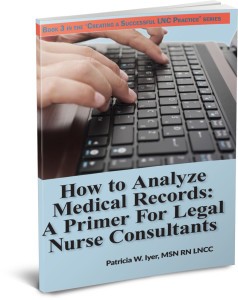 Following these tips will help make the job of organizing paper medical records easier.
Following these tips will help make the job of organizing paper medical records easier.
Use a consistent format
One of the biggest tips in organizing medical records is to use a consistent format. It is easier to locate information when you develop a pattern of placing the same sections of the medical record in the same order every time. A consistent format helps you, your subcontractors and your clients. It provides consistency for paralegals, legal secretaries and attorneys who are involved in the case.
Quickly identify missing records
Every medical record has certain predictable sections. If you get a set of medical records from an attorney and it’s missing important documents, contact the attorney or paralegal so that those pieces can be obtained and sent to you.
Use preprinted indexes
You can save yourself a lot of tedious time if you purchase preprinted index tabs for use in organizing paper records. Do some online searching for the best prices. Hospital and nursing home index tabs that are marketed to attorneys tend to be more expensive than those sold to hospitals. You will find it useful to have a set that’s specific to hospital records and a set that’s specific to nursing home records. They’re made out of paper or plastic, and they have color tabs on the end. You can buy them with tabs that open up at the bottom or side. They save a great deal of time during organizing records because it’s easy to slip a divider in between the sections.
Use an uncluttered surface for organizing paper medical records
Spread out. Organize paper records in an uncluttered environment where you can spread out, such as on a table. If you’re not in an office environment, you can use the kitchen table, the dining room table, or any place where you have room and can make sure that you’ve got all of the pieces together in the right order.
Focus on organizing one record at a time
Have only one person’s medical records on your work surface at a time. Otherwise you are at risk of mixing up information and putting the wrong information in the wrong chart.
Track details
Exquisite attention to detail helps you pick up key pieces of information. This is essential because we can handle records that look the same but are not the same. The patient might be admitted to the same hospital more than once. Those records of two separate admissions might be mixed together.
I had the unfortunate experience of hiring a legal nurse consultant as a subcontractor who did not recognize the patient was admitted to the same hospital a year apart. She had a stack of paper that contained two of every kind of medical record, and completely scrambled these records. After acknowledging that the project was beyond her skills, she returned these records to me and gave up. You have to be able to pick up subtle differences.
 It’s very difficult to be a legal nurse consultant if you’re not detail oriented. I had a legal nurse consultant employee who resigned her position after a few weeks when she realized she did not have the capability to correctly organize medical records
It’s very difficult to be a legal nurse consultant if you’re not detail oriented. I had a legal nurse consultant employee who resigned her position after a few weeks when she realized she did not have the capability to correctly organize medical records
Use cover sheets
It is helpful to place a cover sheet on top of a group of records. Your cover sheet should state the name of the facility or provider and the first and last days of treatment. This will be of assistance when you place the records in chronological order.
Pat Iyer MSN RN LNCC has organized thousands of medical records. These tips come from her new 2016 book, How to Analyze Medical Records: A Primer for Legal Nurse Consultants. Get it here!